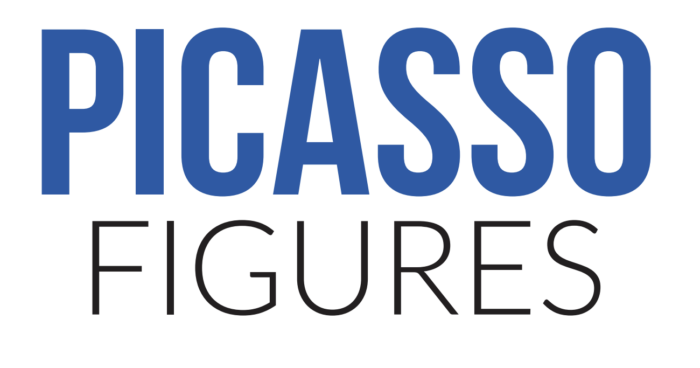
Move things around. Put the eyes in the legs. Be contradictory. Do one eye from the front and one in profile. We always make both eyes the same; have you ever noticed that? [. . .] The violence, the noise of the cymbals crashing together . . . the explosion . . . At the same time, the painting has to defend itself. That’s very important. But painters want to please! A good picture, any picture, has to be bristling with razor blades.
Pablo Picasso
Picasso believed that the artist was a receptacle for emotions and that artworks, independently of their own visual concerns, were the vehicles for them. Seemingly alive, paintings serve to convey interior emotions to the exterior world, often using the human figure as the privileged subject. Under Picasso’s brush, bodies and faces are subject to a logic of expressive deformation, embodying desire, disgust, or even distress. Picasso sometimes attains such a degree of expression that he paradoxically seems to push his figures to the limits of their humanity. This triggered some of the most virulent criticism leveled against him by his contemporaries, when they detected in his paintings only the manifestation of an ugliness and monstrosity that they considered inhuman. A seasoned observer of his time, Picasso painted canvases that reflect—like a distorting mirror—human nature in all its forms.

Pablo Picasso (1881–1973)
The Supplicant (La Suppliante)
Paris, December 18, 1937
Gouache on wood
Musée national Picasso-Paris
Pablo Picasso Acceptance in Lieu, 1979. MP168
On April 26, 1937, the small Basque town of Guernica was bombed by Nazi and Fascist planes in support of the nationalist coup d’état led by Francisco Franco against the Spanish Republic. In reaction, Picasso painted the famous canvas of the same name to denounce the ravages of war. The Supplicant, painted a few months later, continues this symbolic incarnation of distress at the violence of armed conflicts. The entire body of this universal figure of modern lamentation—from the hands raised to the sky to the open mouth—expresses suffering and despair.

Pablo Picasso (1881–1973)
Head of a Bearded Man (Tête d’homme barbu)
[1938]
Oil on canvas
Musée national Picasso-Paris
Pablo Picasso Acceptance in Lieu, 1979. MP175

Pablo Picasso (1881–1973)
Man with a Straw Hat and Ice Cream Cone
(Homme au chapeau de paille et au cornet de glace)
Mougins, August 30, 1938
Oil on canvas
Musée national Picasso-Paris
Pablo Picasso Acceptance in Lieu, 1979. MP174

Pablo Picasso (1881–1973)
Woman Reading
(Femme lisant)
Paris, January 9, 1935
Oil on canvas
Musée national Picasso-Paris
Pablo Picasso Acceptance in Lieu, 1979. MP149

Pablo Picasso (1881–1973)
Child with Doves (L’Enfant aux colombes)
Paris, August 24, 1943
Oil on canvas
Musée national Picasso-Paris
Pablo Picasso Acceptance in Lieu, 1979. MP192
Considered a “degenerate artist” by the Nazi regime, Picasso nevertheless remained in Paris throughout the German occupation, from 1940 to 1944. The dark colors and stripped-back nature of the paintings he produced during this period bear witness to the harshness and anguish that reigned in the capital at that time. In this painting, which depicts an austere living space, Picasso presents two doves—which later become universal symbols of peace—and an overly chubby infant with a grayish complexion holding a rattle. Perhaps these birds and child are signs of a more serene future, albeit one that would bear the scars of those troubled years.

Pablo Picasso (1881–1973)
Nude in a Garden (Nu dans un jardin)
Boisgeloup, August 4, 1934
Oil on canvas
Musée national Picasso-Paris
Pablo Picasso Acceptance in Lieu, 1979. MP148
Inspired by his young companion Marie-Thérèse Walter, whom he met in 1927, this painting belongs to a vast corpus of nudes that celebrates the painter’s desire for her. Overcome by sleep, the female body is transformed into floral arabesques and contorts to better expose itself to the gaze. The curve of the ovoid shapes and the colorful harmony of the palette evoke fertility and tenderness. Its placement in an aquatic plant world, through its decorative approach, is a reference to Matisse’s odalisques.

Pablo Picasso (1881–1973)
Large Nude in a Red Armchair (Grand Nu au fauteuil rouge)
Paris, May 5, 1929
Oil on canvas
Musée national Picasso-Paris
Pablo Picasso Acceptance in Lieu, 1979. MP113
An unrecognizable and cruel portrait of his wife Olga, Large Nude in a Red Armchair returns to the theme of the seated woman of which Picasso was so fond, but the artist here offers a dislocated and almost repulsive vision, depicting a morbidly fluid female body with a monstrous face; her head is thrown back, with her mouth open and her teeth on display. By contrast, the paneling, wallpaper, and frame on the wall evoke the “well-kept” interior of the couple’s opulent apartment in an affluent part of Paris, contrasting with the attenuated and distorted anatomy.

Pablo Picasso (1881–1973)
Woman with a Stylus (La Femme au stylet)
[Paris], December 19–25, 1931
Oil on canvas
Musée national Picasso-Paris
Pablo Picasso Acceptance in Lieu, 1979. MP136
The iconography of this unusually violent painting is taken directly from a historical event: the murder, in his bathtub, of the French revolutionary Jean-Paul Marat by Charlotte Corday in 1793. This episode, which also inspired the painter Jacques-Louis David, serves as a starting point for the representation of spasmodic female violence. Picasso gives us an almost supernatural image—a pretext for a monstrous deformation of the body. Shapeless and threatening, the woman becomes a castrating figure with a toothed mouth.

Pablo Picasso (1881–1973)
The Kiss (Le Baiser)
Paris, January 12, 1931
Oil on canvas
Musée national Picasso-Paris
Pablo Picasso Acceptance in Lieu, 1979. MP132
